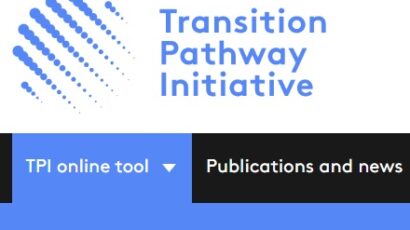
Carbon offsetting explained
What is carbon offsetting?
Carbon offsetting is a process that involves a reduction in, or removal of, carbon dioxide or other greenhouse gas emissions from the atmosphere in order to compensate for emissions made elsewhere.
Carbon offsetting generally involves companies paying other entities to reduce carbon emissions that they cannot currently reduce themselves. The company may then count the emissions reductions they have paid for towards their own climate targets.
Emissions reductions from offsetting projects are first verified for accuracy by a third party. After verification, they are sold as a carbon credit or unit which represents a certain volume of emissions reductions. The money received from the sale of this unit provides an incentive for the offsetting project developer to reduce emissions, and the purchase and subsequent retirement of this credit gives the offset buyer a measurable reduction to claim. Credits that are traded in this manner are often referred to as making up voluntary carbon markets.
What types of offsetting projects exist?
Any activity that reduces emissions could constitute a carbon offset. This includes projects designed to help reduce future emissions (‘mitigation measures’) and projects that help soak up carbon dioxide from the air (‘removal measures’). Some offsetting project types include:
| Nature-based solutions: Emissions avoided or removed by nature-based solutions to climate change can be sold as carbon offsets. Projects involving forest preservation and restoration are particularly common, but offsets may fund other natural carbon sinks, including aquatic and soil-based projects. |
Clean energy solutions: The development of new renewable energy projects, energy efficiency measures, and the deployment of low-carbon alternatives to fossil fuels may also be used to offset carbon emissions. |
Technological solutions: The carbon soaked up and stored by new technologies, such as Direct Air Capture (DAC), may also be sold as carbon offsets, though these technologies have not yet been deployed at scale compared to other project types. |
Offsetting projects vary widely by geography. A business can choose to fund domestic projects, or projects in a range of different countries. Businesses often offset their emissions to meet internal targets, but offsetting may also be used to meet legal obligations under certain compliance trading schemes. Different trading schemes take different positions on offsetting, and a business should consult guidance specific to the markets it is part of.
When could businesses consider carbon offsetting?
Reducing emissions should always be the primary focus of a net zero strategy. Carbon offsetting is a supplement, not a replacement, for directly reducing emissions within a company’s value chain.
Deploying offsets to meet net zero emissions targets may appear more cost-efficient than other measures in the short-term; but this may not be the case when considering the longer-term benefits of decarbonising. That said, offsets can play a role in meeting international climate goals when a business cannot directly reduce all its emissions. The Taskforce for Scaling Voluntary Carbon Markets suggests that voluntary carbon markets will need to be over fifteen times their current size in order to keep warming to 1.5 degrees.
One carbon offsetting option a business may consider is insetting, where the business chooses to fund or develop emissions-reducing activity within its own value chain. For example, a business in the food industry might help to deploy regenerative agriculture or agroforestry within the farms from which it purchases food. Insetting in this case offers the benefits of offsetting whilst also focusing on the business’s own value chain. The extent to which a business can deploy this approach will vary depending on its value chain.
Using carbon credits to finance further emissions reductions
Purchasing carbon credits can be more than a way to reach net zero targets. Carbon credits also present a means to finance emissions reductions once a business has already met its net zero goals through direct action. Indeed, this is the role of offsets envisioned by the Science Based Targets Initiative. Some companies have set specific targets beyond net zero, including aiming to offset all historical emissions. A business’s capacity to do this will vary, but it is important to recognise this option as an addition to systemic change within a company’s own activities, and an opportunity to fund external emissions-reducing projects.
What are the risks of carbon offsetting?
- Emissions reductions may not be delivered
The most significant risk associated with offsetting projects is that their proposed emissions reductions do not reflect the actual volume of emissions avoided or removed. This may be the case for a number of distinct reasons:Additionality:
To be effective as part of an emissions reductions plan, payments for offsets must create emissions reductions where they would not exist in a ‘business-as-usual’ scenario. Without an accurate business-as-usual scenario, the actual volume of abated emissions is unclear.Permanence:
Certain methods of removing carbon from the atmosphere do not guarantee permanent reductions if, for example, a forest is later cleared or burned and releases stored carbon. Nature-based offsetting projects must guarantee not only the preservation or restoration of a certain area, but the continued protection of that area over time.Leakage:
There is a risk that a reduction in carbon emissions in one area simply shifts emissive economic activity elsewhere, reducing or negating the decrease in emissions. -
Potential negative externalities
Carbon offsetting projects may involve significant changes to local ecosystems and economies. They may risk disrupting or damaging biodiversity and local or indigenous communities. Offsetting through reliable verifiers, including some which have created standards that specifically aim to ensure co-benefits for local nature and communities, may mitigate this risk. -
Broader ethical concerns
Carbon offsetting faces broad ethical criticism. Most offset buyers are based in wealthier parts of the world, whereas projects themselves are often based in developing countries. Some critics argue that it is unethical for companies from areas with a high historical carbon footprint to pay for reductions elsewhere rather than taking direct action. -
Reputational risks
The concerns listed in this section have led to significant criticism of carbon offsetting by the public, with many high-profile allegations of companies using carbon offsetting to ‘greenwash’ activity that is otherwise harmful to the climate. Offsetting may therefore pose a reputational risk to a business if it does not also demonstrate that significant steps are being taken to reduce its emissions.
Carbon offset types and standards
Many different types of carbon credit are available each involving interaction with different organisations. Although most carbon credits are verified and sold through a small number of large and well-established standards, newer trading platforms and offsetting strategies are emerging.
In selecting a standard or platform, a business should consider some key factors. Most importantly, the standard should use evidence-based and robust methodologies and demonstrate how it addresses the key risks described above. Ideally, carbon credits should be transparent and convey as much information as possible about the carbon reduction or removal project to the buyer. Companies may also consider the range of different types of carbon offset verified by a particular organisation before making its decision.
Some examples of different standards and organisations, as well as key differences between established standards and newer trading platforms, are described below.
| Type | Description | Advantages | Drawbacks | Examples |
| Large established standards | Established bodies approve offsetting methodologies and verify emission reductions that are then tradeable as carbon credits. | Established verification standards are transparent and have been studied extensively, giving prospective buyers clarity with regards to their key aspects, limitations and risks. | May be slower to adopt emerging techniques or methodologies. | Verified Carbon Standard, Gold Standard, Plan Vivo, Climate Action Reserve |
| New trading platforms | A number of new trading platforms are emerging, often focussing on particular methods of carbon removal. These methods may use existing verification standards or develop their own methodologies. | Many platforms offer reduced transaction costs and innovative approaches to projects that may not be available through bigger standards. | Having faced less public scrutiny, it may be more difficult to verify the accuracy and integrity of their credits. | Climeworks, Nori, Moss.Earth, Puro.earth, Runningtide |
Offsetting terms explained
| Carbon credit | An asset that represents a certain volume of emissions removed or avoided through offsetting projects. Companies may purchase and retire these credits to claim the emissions reductions for themselves. |
| Carbon market | A system of trading carbon credits. Carbon markets may be voluntary or mandated by the government. |
| Emissions trading schemes | A type of carbon market where the government imposes a sector-based, regional, or nationwide cap on emissions. Companies operating within these schemes may only emit carbon according to how many allowances they own and may trade these allowances between themselves. Also called ‘cap and trade’. |
| Greenwashing | Giving the appearance of participating in activities that are environmentally friendly without actually taking meaningful climate action. |
| Insetting | A strategy that involves companies paying for emissions reduction or removal projects within their own value chain. |
| Mitigation | Measures that reduce greenhouse gas emissions by preventing activity that would have caused emissions. For example, switching to renewable energy or avoided deforestation. |
| Removal | Measures that directly soak up greenhouse gases (GHGs) from the atmosphere, which can be achieved through natural, geological or technological methods. |


